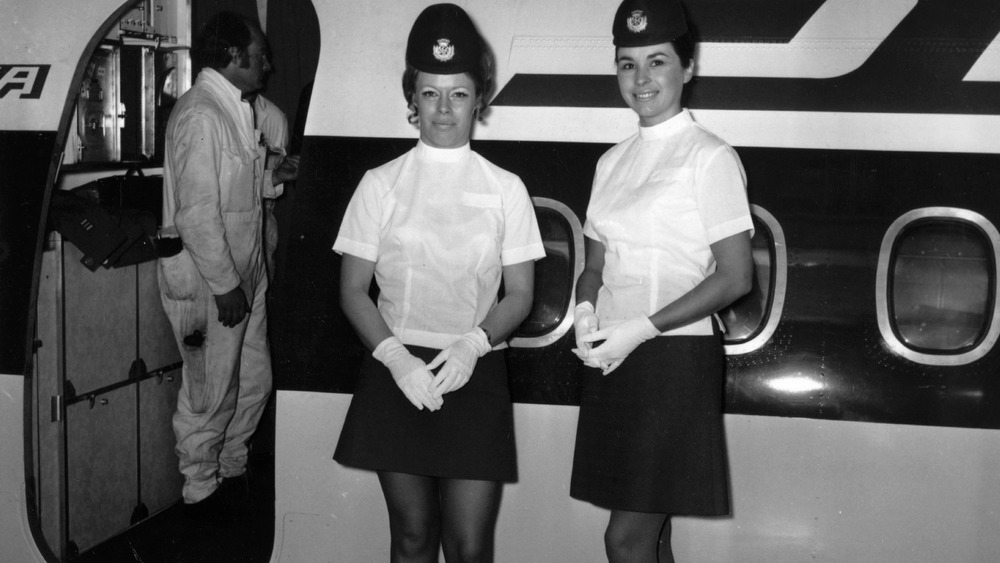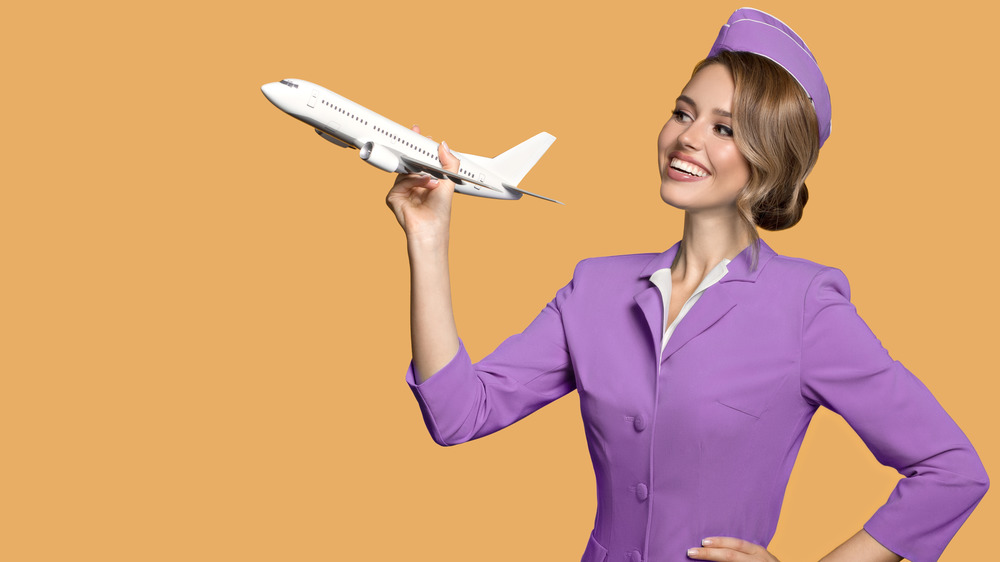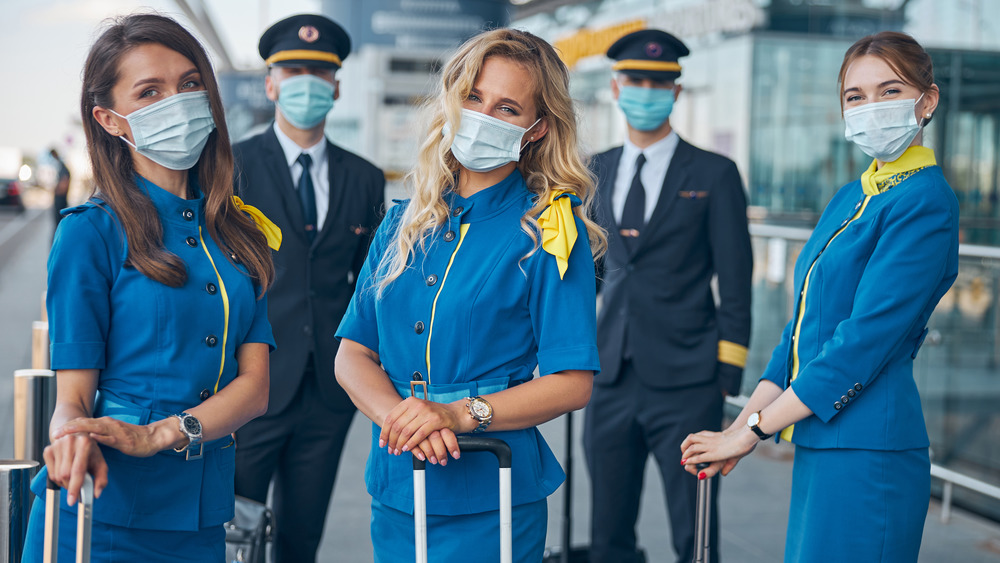The Bizarre Truth About Airline Stewardesses 50 Years Ago
Being a flight attendant seems like such a glamorous job. What other career could you have that takes you around the world and get paid for it? But, like many majority-female occupations, sexism and discrimination were rampant in its early days, until equal rights protections came about.
Flight attendants — or as they were known 50 years ago, stewardesses — were basically used as advertising for airlines. They represented the glory of air travel and were idealized by many. Who wouldn't want to take an airplane and be in the company of glamorous women? They were the ultimate jet-setters. Airlines then believed in order to sell that elegant and chic image, they had to hire young, beautiful women and set limits to who can apply to become a stewardess.
According to Crew Daily, most stewardesses began working around age 18-20. If that seems young, you're right. Many airlines preferred unmarried, childless stewardesses. The average age of tenured stewardesses was 32 to 35. The no-marriage rule was relaxed in 1957, though some airlines still required employees to be single and not pregnant. By 1968, federal courts passed a law barring airlines from discriminating against married women. In 1970, pregnant women were allowed to stay in their jobs.
Vanity Fair reported stewardesses ideally had to be between 5'2"-5'9". They also had to be slender and not weigh more than 140 pounds. (The height standard still exists today, to reach the overhead bins)
Tight shirt, short skirt, and other problems
Airlines wanted their stewardesses to be desirable and available, said Vanity Fair, so they were very strict about their appearance. They were taught to how to stand, how to walk, how to style their hair, how to apply make-up. One former stewardess said they can get reprimanded for forgetting their hat or getting caught smoking while in uniform. But, if they got a tan or freckles, they can get suspended. One recalled the time she was pulled from a flight because she had a bruise on her leg.
To that end, airlines dressed their flight attendants to sell that sexy vision. During the 1970s, airplane travel saw a drop in revenues. To make up for it, many airlines changed their stewardesses' uniforms to be sexier and more tight-fitting. Skirts got shorter; the women were subjected to leg hair inspections to make sure their legs were smooth. They were forced to wear high heels, even though they made the job more difficult, and even hazardous. Airlines also expected, and sometimes forced, stewardesses to retire at age 35. Some companies advertised openings as "the finest school for brides in the country."
Fifty years ago, all of the heightened scrutiny over appearance and sexuality made being a flight attendant difficult.
More respect these days
There would sometimes be jokes from passengers about bedding them; some pilots could be jerks too. Vanity Fair noted headlines in the 1960s and '70s that basically portrayed stewardesses as jet-setting prostitutes, unfair to the hardworking women they are. Finally, some stewardesses had had enough. The group Stewardesses for Women's Rights was formed by two flight attendants in 1972. They demanded protection against discrimination based on gender, appearance, and race.
These days, stewardesses — now officially called flight attendants, following a lawsuit from a male flight attendant — are treated with far more respect. They are, after all, not just there to serve coffee and hand out peanuts. They're the people who can direct you to safety in case something happens during the flight.
Uniforms are more conservative – still stylish, of course, as Condé Nast Traveler reports — but more befitting their serious role during the flight. The average age of flight attendants has risen to 46, with some choosing to stay past that. Sadly, flight attendants must also be trained in self-defense and how to respond to suspicious activity following the events of 9/11. Crew Daily said a large number of flight attendants reported PTSD after 2001.
Today, flight attendants have a harder time because of the pandemic. Fewer travelers mean fewer trips, which leads to cost-cutting at airlines and massive layoffs, wrote CNN. Yes, traveling around the world for your job is glamorous, but it's also hard work and at times, even dangerous.


